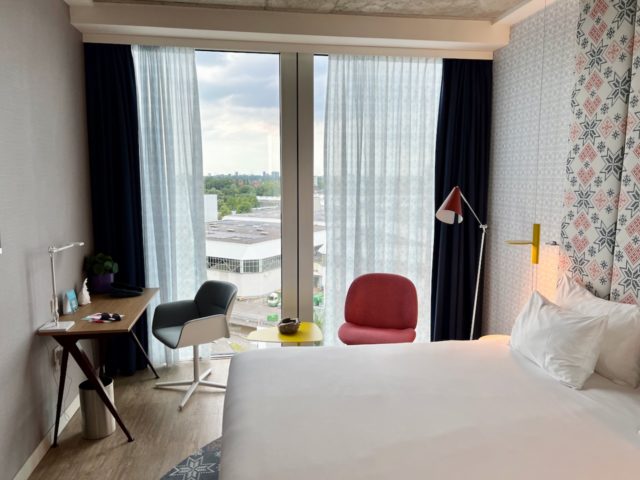
Art of Hotel Room Design
When travelers embark on a journey, they seek more than just a place to lay their heads. They crave an experience, a temporary escape from the ordinary, and a sanctuary where they can unwind and rejuvenate. This is where the art of hotel room design comes into play, transforming the guest’s stay into a memorable retreat.
The Power of First Impressions
In the realm of hotel design, the first impression is often the most lasting. The moment a guest steps into their hotel room, they should feel welcomed, comfortable, and inspired. This all begins with the choice of colors, lighting, and layout.
1. Colors Matter
Color psychology plays a pivotal role in designing a relaxing hotel room. Cool and neutral tones such as soft blues, greens, and earthy hues are known to induce calm and relaxation. These colors provide a soothing backdrop, making guests feel at ease. Warm and vibrant colors can be used as accents to create a visually pleasing contrast. The interplay of these colors sets the mood and atmosphere for the guest.
2. Lighting Sets the Ambiance
Proper lighting can make or break the overall ambiance of a hotel room. A combination of ambient, task, and accent lighting is essential. Dimmable lights provide guests with the flexibility to adjust the room’s brightness according to their preferences. Soft, warm lighting can create a cozy atmosphere, while brighter lighting is ideal for practical tasks such as reading or working.
3. Layout and Flow
The layout of a hotel room should be intuitive and functional. It’s crucial to ensure that guests can move through the room effortlessly. Thoughtful placement of furniture, like a comfortable bed, a workspace, and seating areas, is essential. Maximizing space while maintaining an uncluttered look is the key to creating a relaxing environment.
Comfortable Furnishings
Guests often spend a significant portion of their time in the hotel room, whether for rest or work. Hence, the furnishings play a vital role in ensuring their comfort and satisfaction.
1. Luxurious Bedding
The heart of any hotel room is the bed. It should be a haven of comfort, featuring high-quality mattresses, plush pillows, and soft linens. When guests sink into a cozy bed, they experience a sense of relaxation that defines the entire stay.
2. Thoughtful Seating
A comfortable chair or a small sofa can make a big difference. It provides a space for guests to relax, read a book, or work. The seating should be ergonomic and inviting, promoting relaxation and productivity.

Creating a Sense of Serenity
Hotels aim to create an oasis of serenity for their guests, and this can be achieved through several design elements.
1. Natural Elements
Bringing nature indoors is a growing trend in hotel room design. Plants and natural materials such as wood and stone create a connection with the outdoors, promoting relaxation and well-being.
2. Art and Decor
Artwork and decor can transform a hotel room from a sterile space to a personalized, inviting environment. Pieces that resonate with the location and culture can make the experience more memorable for guests.
3. Personal Touches
Personalization is key to creating a memorable stay. Small touches like welcome notes, local treats, and customized amenities show that the hotel cares about its guests.
Technology and Connectivity
In today’s world, technology is an integral part of the guest experience. From smart room controls to high-speed Wi-Fi, hotels need to keep up with the latest tech trends to provide convenience and connectivity.
Sustainability and Wellness
A growing concern for travelers is the environmental impact of their stay. Sustainable and eco-friendly practices in hotel design, such as energy-efficient lighting and water-saving fixtures, not only reduce the hotel’s carbon footprint but also appeal to environmentally conscious guests.
Conclusion
The art of hotel room design is a multifaceted endeavor that encompasses colors, lighting, furnishings, comfort, serenity, technology, and sustainability. When all these elements come together seamlessly, they create a hotel room that transcends its functional purpose, becoming a true haven for travelers seeking relaxation and rejuvenation.
In the competitive world of hospitality, where guest experiences can make or break a hotel’s reputation, mastering the art of hotel room design is not just a luxury but a necessity. A well-designed hotel room becomes a memory that guests carry with them long after their journey ends. For additional tips and information about the art of hotel room design, click here for more!










